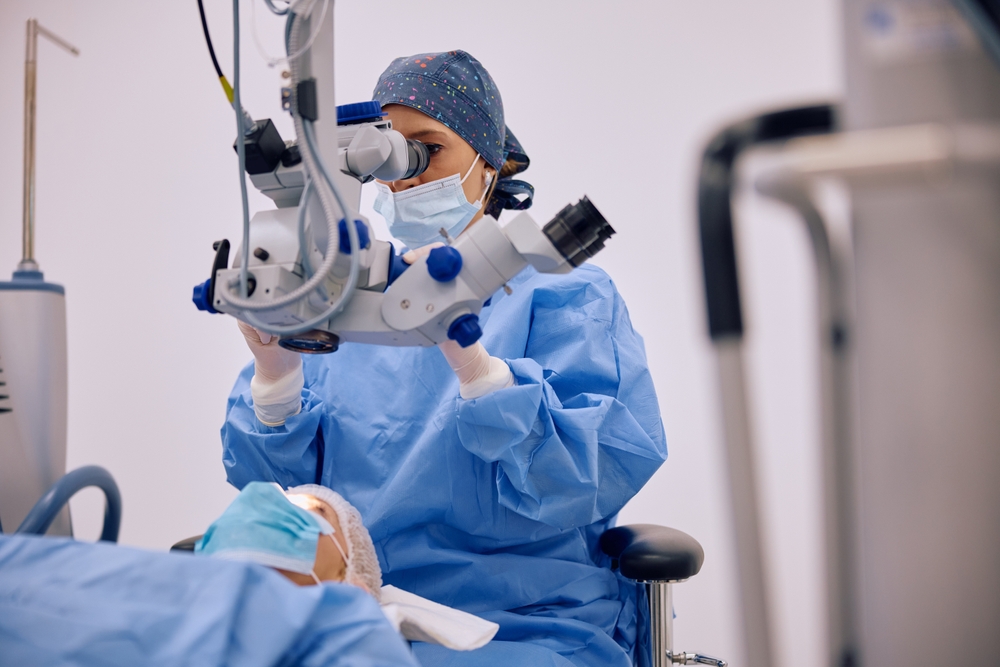
Blog

When it comes to protecting your vision, two of the most common eye conditions you may hear about are glaucoma and cataracts. While both can lead to vision loss if left untreated, they affect the eyes in very different ways. Understanding these differences is key to recognizing symptoms early and getting the right treatment.
What Is Glaucoma?
Glaucoma is a group of eye diseases that damage the optic nerve, the crucial link between your eyes and brain. This damage is often caused by increased eye pressure (intraocular pressure), though not always. Over time, the optic nerve damage can lead to blind spots and even permanent vision loss if not managed.
Glaucoma is often called the “silent thief of sight” because it typically develops without pain or noticeable symptoms in its early stages. By the time you notice changes in your vision, the condition may already be advanced. That’s why early detection through routine eye exams is so important.
What Are Cataracts?
Cataracts, on the other hand, affect the lens of the eye - the part responsible for focusing light. As we age, proteins in the lens can clump together, causing it to become cloudy. This cloudiness makes vision blurry, hazy, or less colorful.
Unlike glaucoma, cataracts don’t damage the optic nerve. Instead, they gradually block or scatter light entering the eye. Symptoms may include:
• Blurry or dim vision
• Glare or halos around lights
• Fading or yellowing of colors
• Difficulty seeing at night
Cataracts can usually be corrected with surgery, where the cloudy lens is replaced with a clear artificial one, restoring vision.
Key Differences Between Glaucoma and Cataracts
While both glaucoma and cataracts can impact your vision, they affect the eyes in very different ways. Glaucoma is a disease that damages the optic nerve, typically due to a buildup of fluid pressure inside the eye. Over time, this pressure can cause irreversible damage to the nerve fibers responsible for transmitting visual information to the brain. Because glaucoma often develops slowly and without pain, many people don’t realize they have it until significant vision loss has already occurred. The vision loss caused by glaucoma is permanent, which makes early detection and consistent monitoring crucial.
Cataracts, on the other hand, occur when the lens of the eye becomes cloudy. This cloudiness is usually the result of natural aging changes, where proteins in the lens begin to clump together. Unlike glaucoma, cataracts do not affect the optic nerve or cause permanent blindness. Instead, they lead to gradually blurred, dim, or hazy vision, often making it difficult to read, drive at night, or see vibrant colors clearly. Fortunately, cataracts can be effectively treated with surgery, which replaces the cloudy lens with a clear artificial one, restoring vision.
The Role of Routine Eye Exams in Gainesville, FL
At Super Optical Express, our medical eye exams in Gainesville, FL are designed to do more than just update your prescription. We carefully check for signs of glaucoma, cataracts, and other eye diseases that can develop without warning. Through advanced imaging and testing, our optometrists can detect subtle changes in your eye health early before symptoms appear. Routine exams allow for early intervention, ongoing monitoring, and personalized management to help preserve your vision for years to come.
Protect Your Sight at Super Optical Express
Both glaucoma and cataracts are common, age-related eye conditions - but their causes, symptoms, and treatments are quite different. The good news is that with regular eye exams, most vision problems can be detected and managed early, preventing permanent damage and maintaining your quality of life.
Schedule your annual eye exam at Super Optical Express to check for signs of glaucoma and cataracts. Contact our office in Gainesville, Florida, by calling (352) 702-9700 to book an appointment today.



